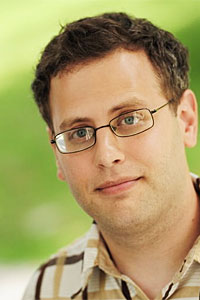Inequality is, without a doubt, the hot topic in econ circles these days. Economics conference seminars on the subject are standing-room-only. Columns and blog posts about inequality are widely read and discussed, and Thomas Piketty's book was a bestseller.
But the question of how best to measure the phenomenon continues to be a contentious topic of debate. The most common measure, cited in countless articles, is pretax income inequality, or differences in the amount that people earn before government taxes and transfers.
That's a problem. Because the government is the main system for redistributing income from the rich to the poor, programmes such as food stamps, Medicaid or the earned income tax credit don't change the distribution of pre-tax income very much -- nor do income taxes on the rich. Higher taxes on top earners may actually increase pre-tax income inequality, because they force companies to raise the salaries of well-paid workers even as they reduce the amount those workers take home.
So we often find ourselves in the strange situation of debating the need for redistribution by pointing to a number that redistribution will not actually reduce. A better way would be to measure the inequality of income after taxes and transfers. That way, we can see how much redistribution is actually accomplishing, which would help policy makers to decide how much more of it to consider.
Another problem with the standard measure of inequality is that it only looks at a snapshot in time. Imagine two sisters, Helen and Grace. Helen gets a job right out of high school and starts making a decent salary, but it doesn't really go up during the course of her career. Grace goes to college and grad school, earning little money the whole time, and starts out at a low salary after graduation, but her income rapidly increases until by the time she's 50 she's making much more than Helen. The standard measurement will say that income inequality between the two is high, even though their lifetime earnings may not be that much different.
Economists Alan Auerbach and Laurence Kotlikoff aim to remedy these oversights in a new paper. Using data from the 2013 Survey of Consumer Finances, and models of changes in lifetime expenditures, they estimate differences in the amounts that Americans will end up spending during their entire lives. This eliminates the two problems described above, because it takes taxes and transfers into account, and it looks over people's entire lives.
In their work, Mr Auerbach and Mr Kotlikoff find that lifetime spending inequality, while still substantial, is less than the pre-tax income inequality usually reported in the media.
Findings from their paper show that even after government redistribution, the wealthy spend much, much more over their lifetimes than the poor. But the difference is perhaps only half as great. The top 20%, the study showed, spend about seven times as much as those in the lowest quintile, compared with an estimated 14 times without taxes and transfers.
This shows that the government is redistributing a substantial amount of wealth. Though this certainly doesn't allay concerns over inequality, it puts them in perspective.
But Mr Auerbach and Mr Kotlikoff's method has some flaws of its own. Lifetime spending can include borrowed resources, for example. This might not matter for the people alive now, but it will certainly matter for their descendants. Some people will die in debt, while others will leave their children and grandchildren large piles of wealth. Surely this matters in terms of how we should think about inequality.
Second, lifetime spending doesn't necessarily capture what people care about. If I grow up poor and hungry, even the certainty that I will one day be rich and well-fed does little to quiet my rumbling belly. Snapshots of inequality are important because of the diminishing marginal utility of consumption -- if my consumption goes up and down, that's worse than if I can smooth it out.
Third, Mr Auerbach and Mr Kotlikoff's measure doesn't take into account the comfort and security that wealth brings. Having the certainty of future wealth is nice, but wealth today makes a big difference because it gives me options if an emergency hits. If I don't have money in the bank, I might be able to borrow, but I'll probably have to pay a pretty high interest rate.
Finally, Mr Auerbach and Mr Kotlikoff don't fix a number of other issues in standard measurements of inequality, such as differences in local cost of living.
Though their method of measuring inequality has many limitations, their numbers are an important addition to the debate. Looking at income after taxes and transfers is especially useful, and should be done much more often. © 2016 Bloomberg View
Noah Smith is an assistant professor of finance at Stony Brook University and a freelance writer for a number of finance and business publications.
